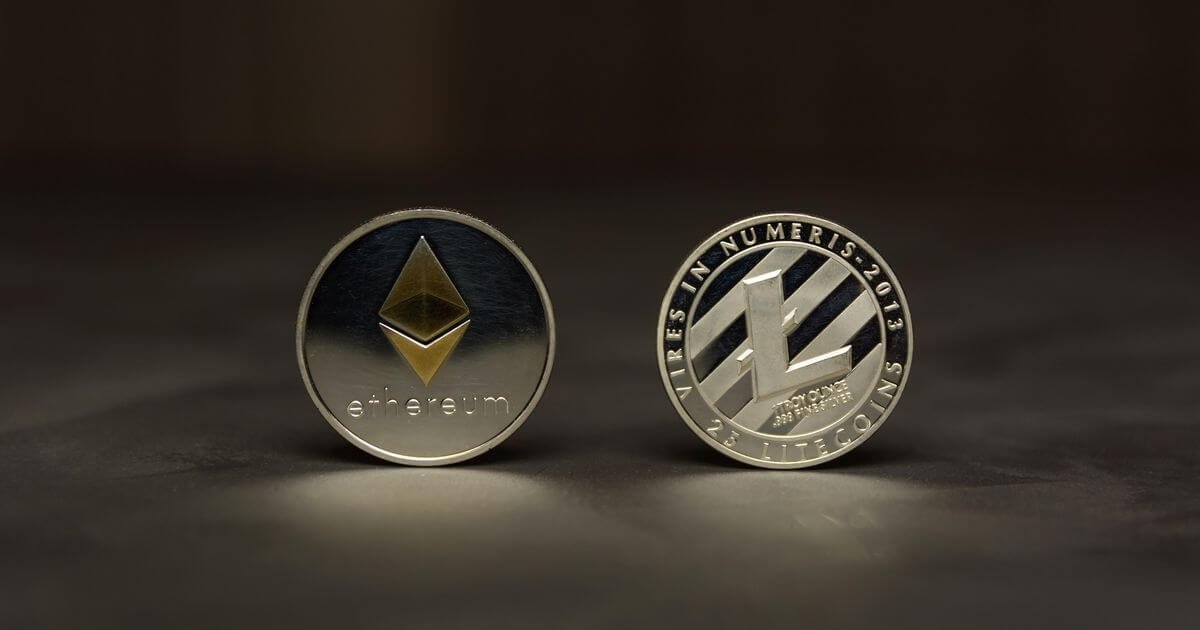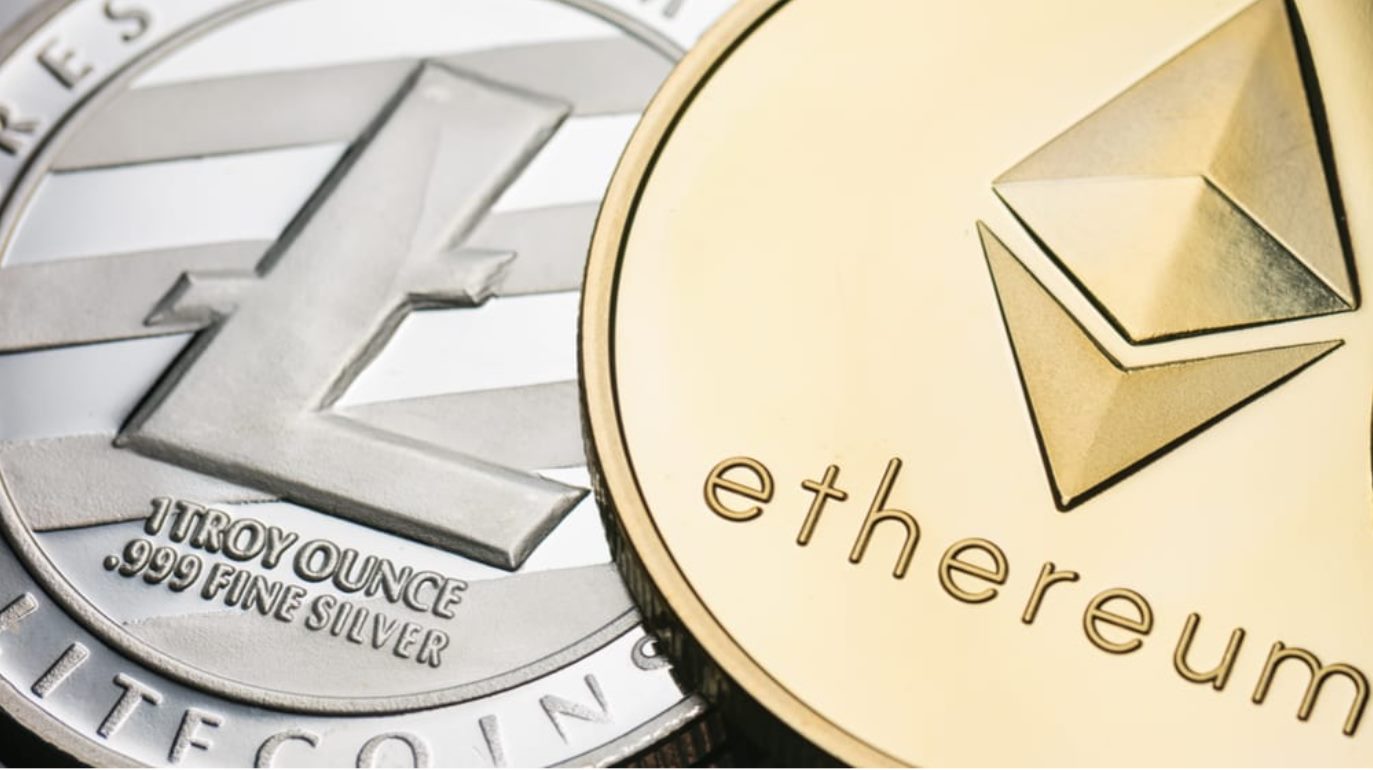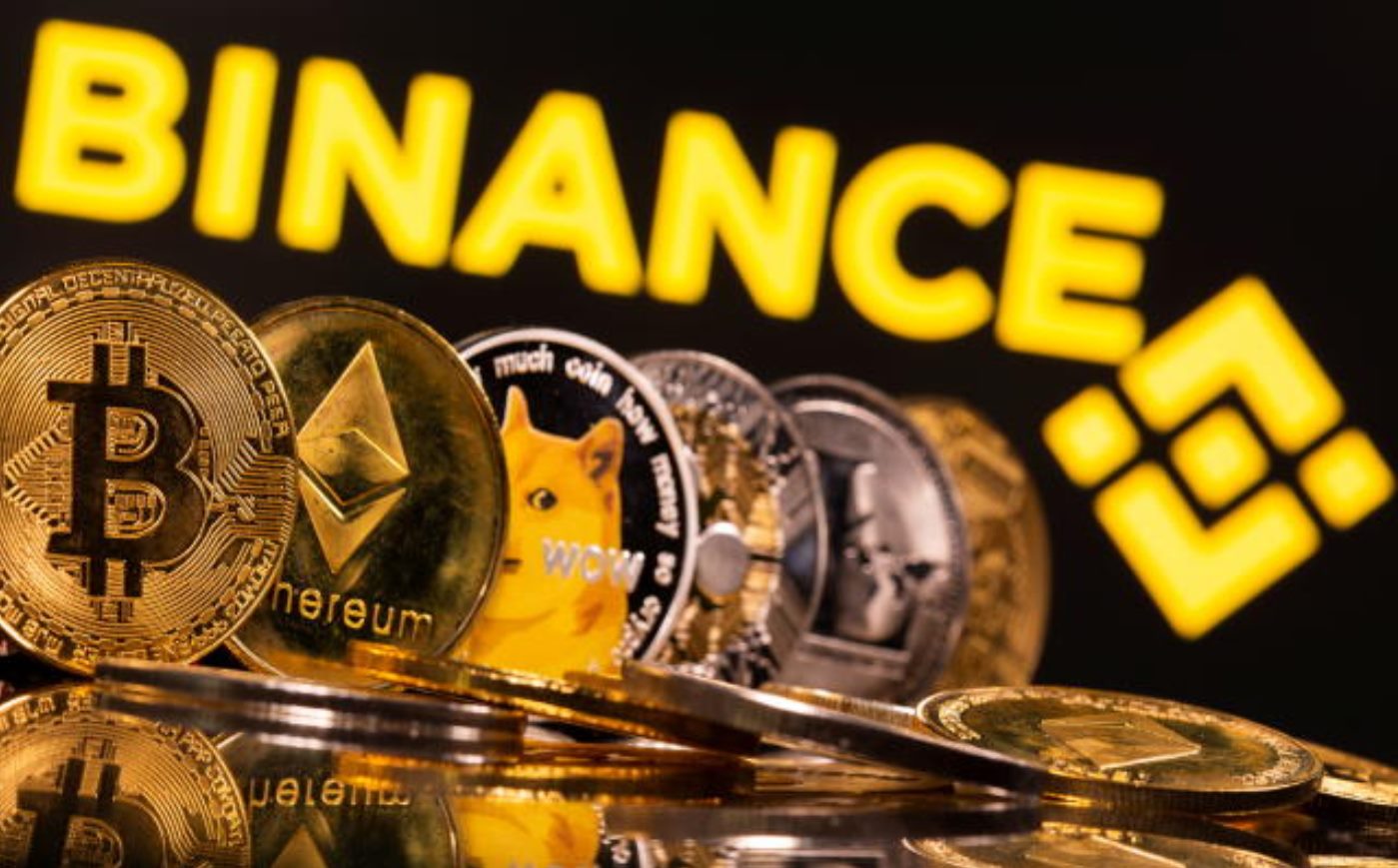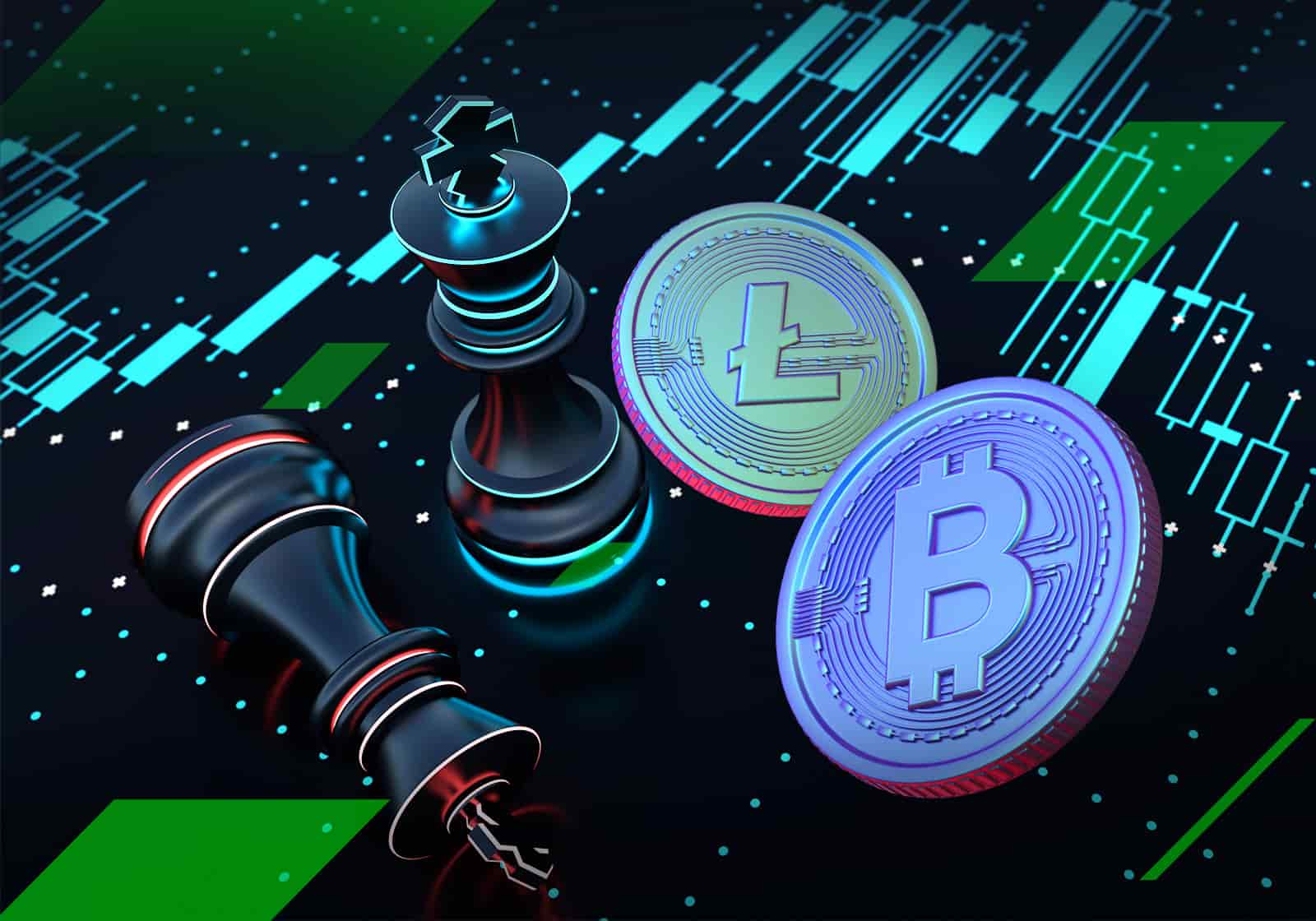Introduction
Welcome to the world of cryptocurrencies, where digital assets have taken the financial markets by storm. Among the numerous cryptocurrencies available, two prominent players have emerged – Ethereum and Litecoin. These two digital currencies have gained significant attention due to their unique features and potential for growth.
Ethereum, often referred to as Ether or ETH, is a decentralized platform that enables developers to build and deploy smart contracts and decentralized applications (DApps). It was launched in 2015 by Vitalik Buterin and has since become the second-largest cryptocurrency by market capitalization.
Litcoin, on the other hand, was created in 2011 by Charlie Lee. It is often referred to as the silver to Bitcoin’s gold, as it shares many similarities with Bitcoin. However, Litecoin aims to offer faster transaction times and lower fees compared to Bitcoin, making it an attractive alternative for everyday transactions.
In this article, we will delve into the key differences and similarities between Ethereum and Litecoin, discussing their market performance, underlying technology, potential for growth, and considerations for investors. By understanding the unique aspects of each cryptocurrency, you will be better equipped to make an informed decision on which one to invest in.
Overview of Ethereum
Ethereum is not just a cryptocurrency but also a decentralized platform that enables the creation and execution of smart contracts and DApps. Smart contracts are self-executing contracts with the terms of the agreement written directly into code, eliminating the need for intermediaries or third parties. This feature makes Ethereum a popular choice for developers looking to build decentralized applications.
One of the key distinguishing factors of Ethereum is its ability to support the development of DApps. These applications run on a decentralized network of computers, or nodes, which ensures that they are not controlled by any single entity. This decentralized nature makes Ethereum resistant to censorship and tampering.
Ethereum’s native cryptocurrency, Ether (ETH), is used to fuel the network and incentivize the nodes to perform computations and validate transactions. This cryptocurrency can also be used as a medium of exchange and store of value.
Another notable feature of Ethereum is its scalability. The platform has undergone significant upgrades over the years to improve its performance and address scalability concerns. Ethereum 2.0, also known as Eth2 or Serenity, is a major upgrade that is expected to enhance scalability by implementing a new consensus mechanism called Proof of Stake (PoS).
Ethereum has gained immense popularity as the go-to platform for crowdfunding through Initial Coin Offerings (ICOs). Many startups and projects have raised funding by issuing tokens on the Ethereum network. These tokens represent an ownership stake or utility within the project and can be traded on cryptocurrency exchanges.
With its robust ecosystem and wide range of use cases, Ethereum has garnered significant attention from developers, businesses, and investors. Its versatility, scalability improvements, and established reputation make it a strong contender in the cryptocurrency market.
Overview of Litecoin
Litcoin, often referred to as digital silver, was created in 2011 by Charlie Lee, a former Google employee. Inspired by Bitcoin, Litecoin aimed to offer a faster and more efficient alternative for cryptocurrency transactions.
One of the key features of Litecoin is its faster block generation time. While Bitcoin takes approximately 10 minutes to generate a new block, Litecoin achieves this in just 2.5 minutes. This faster block generation allows for quicker transaction confirmations, making Litecoin more suitable for everyday transactions.
Litecoin also employs a different hashing algorithm, known as Scrypt, compared to Bitcoin’s SHA-256. The Scrypt algorithm is designed to be memory-intensive, which means it requires more memory to compute the mining process. This feature makes Litecoin more resistant to mining using specialized hardware, known as ASICs, and promotes decentralization by allowing more individuals to participate in the mining process.
Furthermore, Litecoin has a maximum supply of 84 million coins, four times higher than Bitcoin’s limit of 21 million. This larger supply may appeal to those looking for a cryptocurrency with a greater availability of coins.
Despite its similarities to Bitcoin, Litecoin’s transaction fees are typically lower. This makes it a more cost-effective option for users looking to transfer funds quickly and efficiently. Additionally, Litecoin’s network can handle a higher number of transactions per second compared to Bitcoin, further adding to its appeal for regular transactions.
Litecoin has gained recognition and support from a wide range of merchants and businesses. It is increasingly accepted as a form of payment for goods and services, further solidifying its use as a practical digital currency.
In recent years, Litecoin has continued to evolve and adapt to meet the changing needs of the cryptocurrency market. The development team has implemented updates such as Segregated Witness (SegWit) and the Lightning Network, further enhancing the scalability and transaction capabilities of the network.
With its focus on speed, lower transaction fees, and growing merchant acceptance, Litecoin has established itself as a strong contender in the cryptocurrency space, offering a practical alternative to Bitcoin for everyday transactions.
Market Comparison
When comparing the market performance of Ethereum and Litecoin, it’s important to consider factors such as market capitalization, trading volume, and price trends.
Ethereum has consistently held its position as the second-largest cryptocurrency by market capitalization, second only to Bitcoin. As of [current date], Ethereum’s market cap stands at [market cap value], indicating a strong level of investor confidence and interest in the platform.
Litecoin, while not as large in market capitalization as Ethereum, still holds a significant position in the cryptocurrency market. As of [current date], Litecoin’s market cap stands at [market cap value]. Although it is not in the top five cryptocurrencies by market cap, Litecoin has maintained a solid following and has seen gradual growth over the years.
Trading volume is another important metric to consider when comparing the market performance of Ethereum and Litecoin. Higher trading volumes indicate increased liquidity and market activity. Ethereum typically sees higher trading volumes due to its larger market cap and widespread adoption. However, Litecoin also exhibits notable trading volume, suggesting an active trading community and interest in the coin.
In terms of price trends, both Ethereum and Litecoin have experienced significant price increases and volatility over the years. Ethereum, in particular, witnessed a major price surge in [specific year], reaching an all-time high of [price value] per coin. Litecoin, too, has had its share of price increases, with its highest recorded price at [price value] per coin.
It is important to note that the cryptocurrency market is highly volatile, and past performance does not guarantee future results. Investors should conduct thorough research and consider market factors before making any investment decisions.
Overall, Ethereum holds a higher market capitalization and trading volume compared to Litecoin, reflecting its larger presence in the cryptocurrency market. However, Litecoin has a dedicated following and has shown steady growth over the years.
Technology Comparison
When comparing the underlying technology of Ethereum and Litecoin, it’s important to consider their blockchain architecture, consensus mechanisms, and scalability solutions.
Ethereum utilizes a Turing-complete blockchain, which means it can support the execution of any arbitrary program. This allows for the creation and execution of smart contracts and decentralized applications (DApps) on the Ethereum network. The Ethereum Virtual Machine (EVM) processes these smart contracts and ensures their accuracy and security.
In terms of consensus mechanism, Ethereum currently relies on the Proof of Work (PoW) algorithm, similar to Bitcoin. However, Ethereum is in the process of transitioning to a new consensus mechanism called Proof of Stake (PoS) as part of the Ethereum 2.0 upgrade. PoS will enable Ethereum holders to lock up their ether as collateral and participate in the validation of transactions. This transition is expected to increase network security and reduce energy consumption compared to PoW.
Litecoin, on the other hand, shares many similarities in technology with Bitcoin. It utilizes a blockchain architecture similar to Bitcoin’s, with each block containing a record of transactions. Litecoin also relies on the PoW consensus mechanism, where miners compete to solve mathematical puzzles to validate transactions and secure the network.
Scalability has been a concern for both Ethereum and Litecoin. Ethereum has faced challenges in handling a large number of transactions, resulting in congestion and increased fees during periods of high network activity. However, Ethereum 2.0 aims to address these scalability issues through mechanisms such as sharding and the implementation of the PoS consensus algorithm.
Litecoin, with its faster block generation time and larger block size compared to Bitcoin, has generally been able to handle a higher number of transactions per second. However, it also faces scalability challenges as the network grows. To improve scalability, Litecoin has implemented technologies such as Segregated Witness (SegWit) and the Lightning Network, which allow for faster and more efficient transactions.
Both Ethereum and Litecoin have active development communities that continuously work on improving the technology and addressing scalability concerns. It is important to monitor future updates and upgrades to gauge the effectiveness of their scalability solutions.
In summary, Ethereum and Litecoin differ in their blockchain architecture, consensus mechanisms, and scalability solutions. Ethereum’s Turing-complete blockchain enables the execution of smart contracts and DApps, while Litecoin shares similarities with Bitcoin in its blockchain structure. Both cryptocurrencies face scalability challenges, but Ethereum 2.0 and Litecoin’s technological developments aim to mitigate these issues and improve network efficiency.
Potential for Growth
When considering the potential for growth of Ethereum and Litecoin, it is important to look at a combination of factors such as adoption, technological developments, and market demand.
Ethereum has gained significant adoption since its inception and has established itself as a leading platform for decentralized applications. Its robust ecosystem attracts developers and businesses looking to build on its infrastructure. The upcoming Ethereum 2.0 upgrade, with its focus on scalability and energy efficiency, is expected to further drive adoption and attract more participants to the network. Additionally, the growing popularity of decentralized finance (DeFi) applications built on Ethereum has contributed to its potential for growth, as DeFi continues to gain traction in the broader financial industry.
Likewise, Litecoin has shown notable growth over the years. Its faster transaction times and lower fees make it attractive for everyday use, positioning it as a potential alternative to traditional payment systems. Further technological advancements, such as the integration of the Lightning Network and ongoing improvements to its scalability, contribute to its potential growth. Additionally, Litecoin’s wide acceptance by merchants and businesses indicates its potential to become a more widely used medium of exchange in the future.
It is also vital to consider the overall market demand and investor sentiment towards cryptocurrencies. The growing interest in digital assets and the increasing acceptance of cryptocurrencies by mainstream organizations and institutions suggest a positive outlook for both Ethereum and Litecoin. As more individuals and institutions recognize the benefits of blockchain technology and cryptocurrencies, the potential for growth in these assets becomes more apparent.
Furthermore, global economic events and market conditions can also impact the potential growth of cryptocurrencies. Economic uncertainty and inflationary fears can drive interest in decentralized assets as a hedge against traditional financial instruments. Additionally, government regulations and policies can also affect the growth and adoption of cryptocurrencies, as favorable regulations can create a conducive environment for their development.
It is important to note that the cryptocurrency market is volatile and subject to rapid changes. The potential for growth in both Ethereum and Litecoin is influenced by various factors, and it is crucial for investors to conduct thorough research and consider market conditions before making investment decisions.
In summary, both Ethereum and Litecoin have the potential for growth based on factors such as adoption, technological developments, and market demand. The upcoming Ethereum 2.0 upgrade and the growing interest in decentralized finance contribute to Ethereum’s growth potential. Litecoin’s faster transaction times, wider merchant acceptance, and ongoing scalability enhancements point to its potential as a practical medium of exchange. However, market factors and global events can impact the growth trajectories of these cryptocurrencies, and investors should exercise caution and conduct due diligence before making any investment decisions.
Investment Considerations
When considering investing in cryptocurrencies like Ethereum and Litecoin, it is essential to evaluate several key factors to make informed investment decisions. Here are some key considerations to keep in mind:
Volatility: Cryptocurrencies are known for their high volatility, which can lead to substantial price swings in short periods. Investors should be prepared for price fluctuations and assess their risk tolerance before investing.
Market Analysis: Conduct thorough market analysis to understand trends, historical performance, and future prospects of cryptocurrencies. Consider factors such as market capitalization, trading volumes, and adoption rates to gauge the potential for growth.
Technology and Development: Evaluate the underlying technology and ongoing development efforts of the cryptocurrencies. Look for advancements, upgrades, and innovations that can enhance their scalability, security, and usability.
Regulatory Landscape: Stay informed about regulatory developments and legal considerations. Changes in regulations and government policies can impact the cryptocurrency market and investment opportunities.
Use Cases and Adoption: Assess the real-world use cases and adoption rates of the cryptocurrencies. Look for applications in sectors such as finance, supply chain, gaming, or decentralized applications. Higher adoption and utility can contribute to long-term growth.
Competition: Consider the competitive landscape and analyze how cryptocurrencies compare to others in the market. Evaluate their unique features, advantages, and areas of differentiation.
Risk Management: Diversify your investment portfolio and avoid investing more than you can afford to lose. Consider using stop-loss orders or setting profit targets to manage risk effectively.
Security: Ensure you use secure wallets and reputable exchanges for storing and trading cryptocurrencies. Protect your private keys and be cautious of phishing scams or fraudulent platforms.
Education and Research: Continuously educate yourself about cryptocurrencies, blockchain technology, and market trends. Stay updated with news, analysis, and insights to make informed investment decisions.
Financial Advice: Consider seeking financial advice from professionals with expertise in cryptocurrency investments. They can provide insights tailored to your financial goals and risk appetite.
It is important to note that investing in cryptocurrencies carries inherent risks, and past performance is not indicative of future results. Investors should carefully evaluate their risk tolerance, conduct thorough research, and make investment decisions based on their individual circumstances.
In summary, when considering investments in cryptocurrencies like Ethereum and Litecoin, it is crucial to assess factors such as volatility, market analysis, technology and development, regulatory landscape, adoption rates, competition, risk management, security, education, and financial advice. By considering these factors, investors can make more informed decisions and navigate the complex and dynamic world of cryptocurrency investments.
Conclusion
In conclusion, Ethereum and Litecoin are two prominent cryptocurrencies that have gained significant attention in the digital currency market. While Ethereum focuses on smart contracts and decentralized applications, Litecoin aims to provide faster transaction times and lower fees for everyday transactions.
When evaluating these cryptocurrencies, it is important to consider various factors. Ethereum has a larger market capitalization and trading volume, reflecting its widespread adoption and position as the leading platform for decentralized applications. The upcoming Ethereum 2.0 upgrade, with its focus on scalability, is expected to further fuel its growth potential.
Litecoin, on the other hand, offers advantages such as faster block generation and lower fees, making it a practical choice for everyday transactions. Its growing merchant acceptance and ongoing scalability developments position it as a contender in the payment ecosystem.
Both Ethereum and Litecoin have the potential for growth based on factors such as adoption, technological advancements, and market demand. However, it is crucial to remember that the cryptocurrency market is highly volatile and subject to market conditions and regulatory changes. Investors should conduct thorough research, assess their risk tolerance, and seek professional advice before making any investment decisions.
Ultimately, the choice between Ethereum and Litecoin will depend on individual investment goals, risk appetite, and belief in the fundamental strengths and potential of each cryptocurrency. It is advisable to diversify investments and stay updated with market trends to maximize opportunities and mitigate risks in the ever-evolving cryptocurrency landscape.
As the cryptocurrency market continues to grow and mature, Ethereum and Litecoin remain influential players that are likely to shape the future of digital finance. By staying informed and making well-informed investment decisions, investors can participate in the potential growth and opportunities presented by these innovative cryptocurrencies.

























